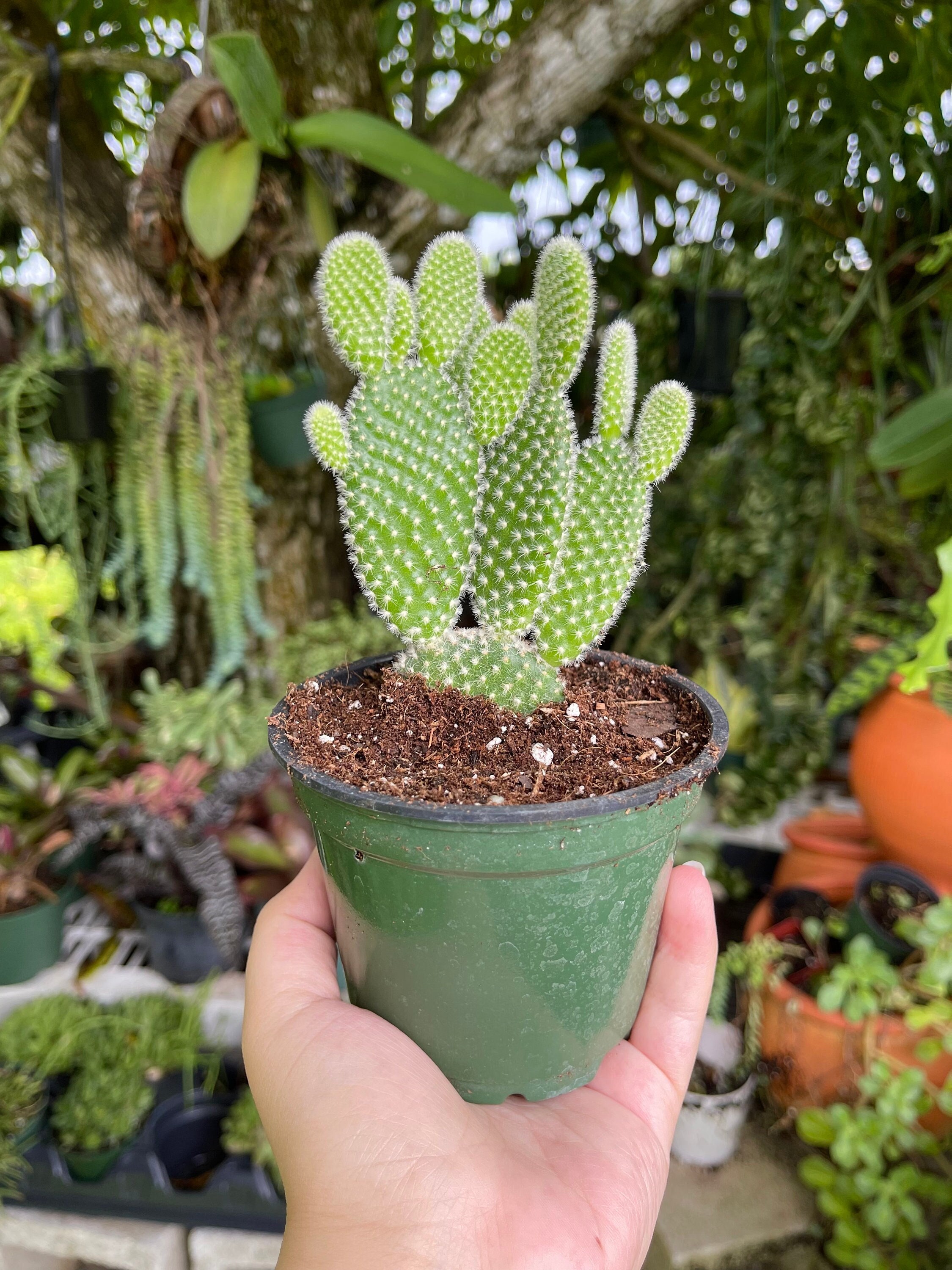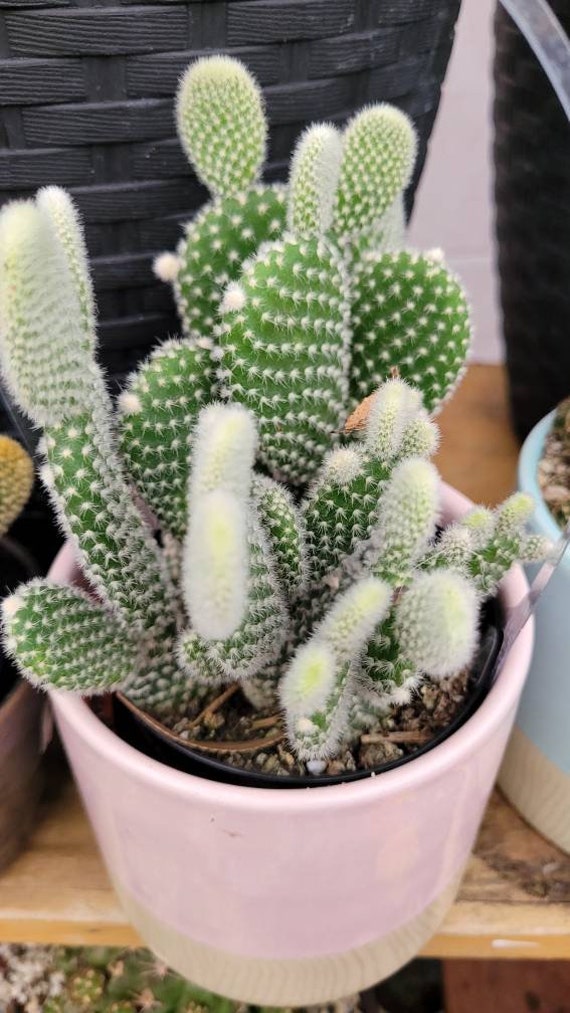This paddle cactus is favored by those who cultivate succulents inside and outside. The green pads of this type of cacti form a shrub-like formation and are not covered in spines, but are instead characterized by white or yellow aureoles that resemble tufts of cotton. Despite their inviting appearance, one should use caution when touching them!
Table of Contents
Care and Propagation Information
This type of cactus, Opuntia microdasys albata “Bunny Ears”, does not have spines, but the aureoles can still cause pinching, so it is not suitable for children and pets. Despite this, it is still a great choice for indoor gardening, as it is easy to look after and grows well indoors.
Watering
Opuntia microdasys albata “Bunny Ears” is typically less demanding when it comes to water than other succulents. A good practice is to give it a thorough watering, then let the soil completely dry out before re-watering. This is known as the “soak and dry” method.
Where to Plant
If you live in a region with a colder climate than 20°F (-6.7°C), it is best to plant “Bunny Ears” in a pot that can be brought inside. This succulent thrives in areas with full to partial sunlight.
If planting outside, make sure you choose a spot with enough room for the plant to grow – it can reach a width of up to 6 feet (1.8 m). Ensure that the area receives at least 6 hours of sunshine each day. If planting indoors, find a spot with plenty of sunlight, such as next to a south-facing window (if you’re in the Northern Hemisphere).
How to Propagate Opuntia microdasys albata “Bunny Ears”
Place the Opuntia pads on top of soil with good drainage. Check the soil often and water when it is dry. It may take a few weeks for the cactus pads to form roots. Once the roots start to develop, place the “Bunny Ears” in the soil and water it like you would a full-sized succulent.
Learn more about how to safely work with Opuntia cactus.
Care and Propagation Information
General Care for Opuntia microdasys albata “Bunny Ears”
Watering
Opuntia microdasys albata “Bunny Ears” is typically less demanding when it comes to water than other succulents. A good practice is to give it a thorough watering, then let the soil completely dry out before re-watering. This is known as the “soak and dry” method.
Where to Plant
If you live in a region with a colder climate than 20°F (-6.7°C), it is best to plant “Bunny Ears” in a pot that can be brought inside. This succulent thrives in areas with full to partial sunlight.
If planting outside, make sure you choose a spot with enough room for the plant to grow – it can reach a width of up to 6 feet (1.8 m). Ensure that the area receives at least 6 hours of sunshine each day. If planting indoors, find a spot with plenty of sunlight, such as next to a south-facing window (if you’re in the Northern Hemisphere).
How to Propagate Opuntia microdasys albata “Bunny Ears”
Place the Opuntia pads on top of soil with good drainage. Check the soil often and water when it is dry. It may take a few weeks for the cactus pads to form roots. Once the roots start to develop, place the “Bunny Ears” in the soil and water it like you would a full-sized succulent.
Learn more about how to safely work with Opuntia cactus.
FAQ
How big does Opuntia bunny ears get?
Approximately two to three feet in height.
Why is my bunny ear cactus growing long and skinny?
This cactus should not be exposed to too much light. Place it in front of a south or south-west facing window that gets sunlight throughout the day for optimal results. If the cactus receives too little light, its oval-shaped pads will become stretched and bent toward the window.
Are bunny ear cactus illegal?
The Biosecurity Act 2014 states that Bunny Ears or Golden Bristle Cactus are classed as Category 2, 3, 4, and 5 restricted invasive plants, meaning they must not be kept, moved, given away, sold, or released into the environment.
Why is my bunny ear cactus thin?
The absence of sufficient light can cause a Bunny Ear Cactus to droop, bend, or stretch out (known as etiolation). This is because, when a plant does not get the light it needs, it will attempt to reach the nearest source of light, resulting in a stretching of the plant.
How much sun does a bunny ear cactus need?
When handling the cactus, wear gloves to protect your hands from its sharp spines. Prepare a pot filled with a cactus potting soil. Place the cactus in the pot, making sure the root system is covered. Water the cactus thoroughly and then let the soil dry before watering it again.
If you’re a novice gardener, the bunny ear cactus is a great choice given its easy maintenance. To plant your bunny ear cactus, make sure it gets plenty of sun—at least 14 hours of light each day. Wear gloves when handling the cactus, as its spines can be quite sharp. Put the cactus in a pot filled with cactus potting soil, making sure the roots are covered. Once planted, give the cactus a good watering and then wait for the soil to dry out before watering again.



